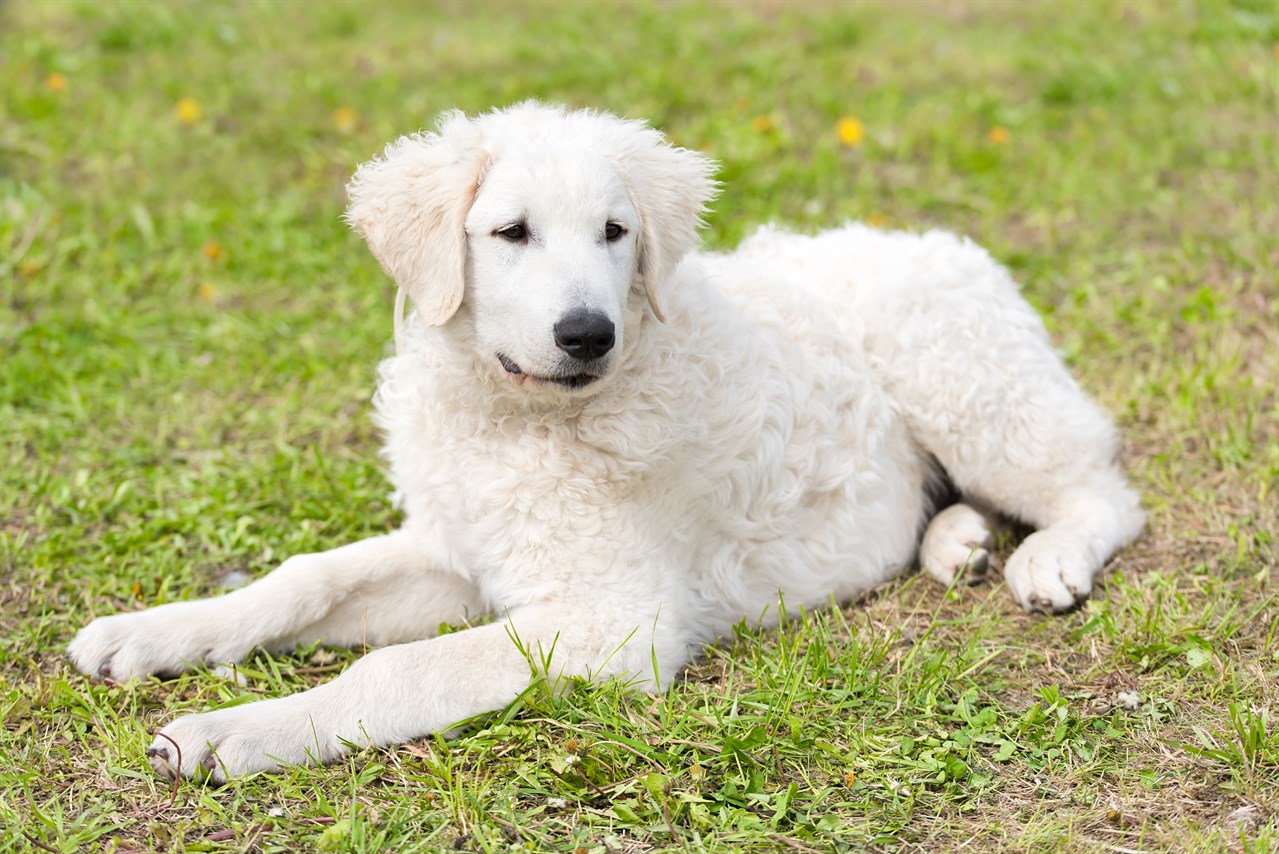The Kuvasz: A Noble Guardian of Hungarian Heritage

In the realm of majestic and noble dog breeds, the Kuvasz stands out as a regal and fiercely loyal guardian. This ancient breed hails from the heart of Hungary and has a rich history that spans centuries. From its origins to its distinctive appearance, the Kuvasz is a breed that continues to captivate dog lovers worldwide. In this comprehensive exploration, we will delve into the history, breed group, size, coat, colour, and appearance of the Kuvasz. Additionally, we will address several common questions about the breed, such as its unique dew claws, its purpose, its relation to the Great Pyrenees, differences between the two breeds, similar breeds, and how it compares to the Maremma.
A Glimpse into History
The Kuvasz is a breed with roots that run deep into Hungary's history. It is believed to have been in existence for over a thousand years, with some tracing its lineage back to ancient Turkish and Tibetan dogs brought to Hungary by nomadic tribes. The name "Kuvasz" itself is thought to be derived from the Turkish word "kawasz," which means "armed guard of the nobility."
Throughout history, Kuvasz dogs served as loyal and protective companions to Hungarian nobility. They guarded livestock, including sheep and cattle, and even accompanied their owners into battle. With such a distinguished lineage, it's no wonder that the Kuvasz is often considered a national treasure in Hungary.
Also Known As
The Kuvasz is also known as the Hungarian Kuvasz by lovers of the breed.
Breed Group and Size
The Kuvasz belongs to the Working Group, a category of dog breeds known for their dedication to tasks like guarding, herding, and pulling carts. These dogs are characterised by their strength, intelligence, and an innate desire to serve their human companions.
In terms of size, Kuvasz dogs are large and robust. Adult males typically stand between 71 to 76 centimetres at the shoulder and weigh around 45 to 52 kilogrammes. Females are slightly smaller, standing at 66 to 71 centimetres and weighing approximately 32 to 41 kilogrammes.
Coat, Colour, and Appearance
The Kuvasz boasts a distinctive appearance characterised by its beautiful, dense coat. The breed's double coat consists of a soft, dense undercoat and a straight, coarse outer coat. This combination provides insulation against both harsh weather conditions and potential predators.
Kuvasz coats come in shades of white, and their fur is remarkably similar to the appearance of a fluffy cloud. This colouration serves a practical purpose; it helps the dogs blend in with their herds and livestock, effectively camouflaging them against potential threats.
In terms of appearance, Kuvasz dogs have a proud and regal bearing. They possess a well-proportioned head with expressive almond-shaped eyes, and their ears are medium-sized and V-shaped. Their tails are long, feathered, and carried high, giving them an air of grace and confidence.
Do Kuvasz Have Double Dew Claws?
Yes, Kuvasz dogs typically have double dew claws on their hind legs. This unique feature sets them apart from many other breeds and is a defining characteristic of the breed.
What Is the Purpose of the Kuvasz Dog?
Throughout history, Kuvasz dogs served a dual role as guardians and herding dogs. They were entrusted with the protection of livestock and property, ensuring the safety of their human companions and their valuable animals.
Is Kuvasz Related to Great Pyrenees?
Yes, Kuvasz and Great Pyrenees (also known as Pyrenean Mountain Dogs) share some similarities, as both are large, white, guardian breeds. They are both descendants of ancient livestock guardian dogs but have distinct regional origins. The Kuvasz hails from Hungary, while the Great Pyrenees originates from the Pyrenees Mountains on the border between France and Spain.
What Is the Difference Between a Pyrenees and a Kuvasz Dog?
While Kuvasz and Great Pyrenees have similarities, there are notable differences. Kuvasz dogs are generally more agile and have a somewhat leaner build compared to the bulkier Great Pyrenees. Additionally, Kuvasz dogs tend to be more reserved and aloof with strangers, while Great Pyrenees are often more sociable.
What Dogs Are Similar to Kuvasz?
Several dog breeds share similarities with the Kuvasz. These include the Maremma Sheepdog, Anatolian Shepherd Dog, and Polish Tatra Sheepdog. All of these breeds are known for their protective instincts and history of guarding livestock.
What Is the Difference Between a Maremma and a Kuvasz Dog?
Maremma Sheepdogs, like Kuvasz dogs, are also livestock guardian breeds. The main differences between the two lie in their origins and temperament. Maremmas originate from Italy and tend to be more independent, while Kuvasz dogs have a stronger Hungarian heritage and are often more loyal and obedient.
The Kuvasz is a remarkable breed with a storied history, impressive size, distinctive appearance, and important role as a guardian and herder. Its enduring legacy as a faithful protector makes it a treasured part of Hungarian culture and a beloved companion to those fortunate enough to share their lives with one. Whether they are guarding livestock, offering unwavering loyalty to their families, or simply gracing us with their regal presence, Kuvasz dogs continue to be a breed that commands respect and admiration.
Continue reading our Kuvasz in-depth articles
- Kuvasz Temperament and Behaviour
- Kuvasz Training and Socialisation
- Kuvasz Toilet Training
- Kuvasz Barking Habits
- Kuvasz Grooming Requirements
- Kuvasz Shedding Behaviour
- Kuvasz Sleeping Behaviour
- Kuvasz Diet and Feeding Requirements
- Kuvasz Average Lifespan
- Kuvasz Exercise Requirements
- Kuvasz Common Health Issues
- Kuvasz Suitability Guide
- Kuvasz Advantages
- Kuvasz Disadvantages
- Kuvasz Cost to Buy and Own
- Kuvasz Clubs and Links
- Selling Kuvasz Puppy Litters and Dogs
- Buying Kuvasz Puppies and Dogs
- Kuvasz Alternatives